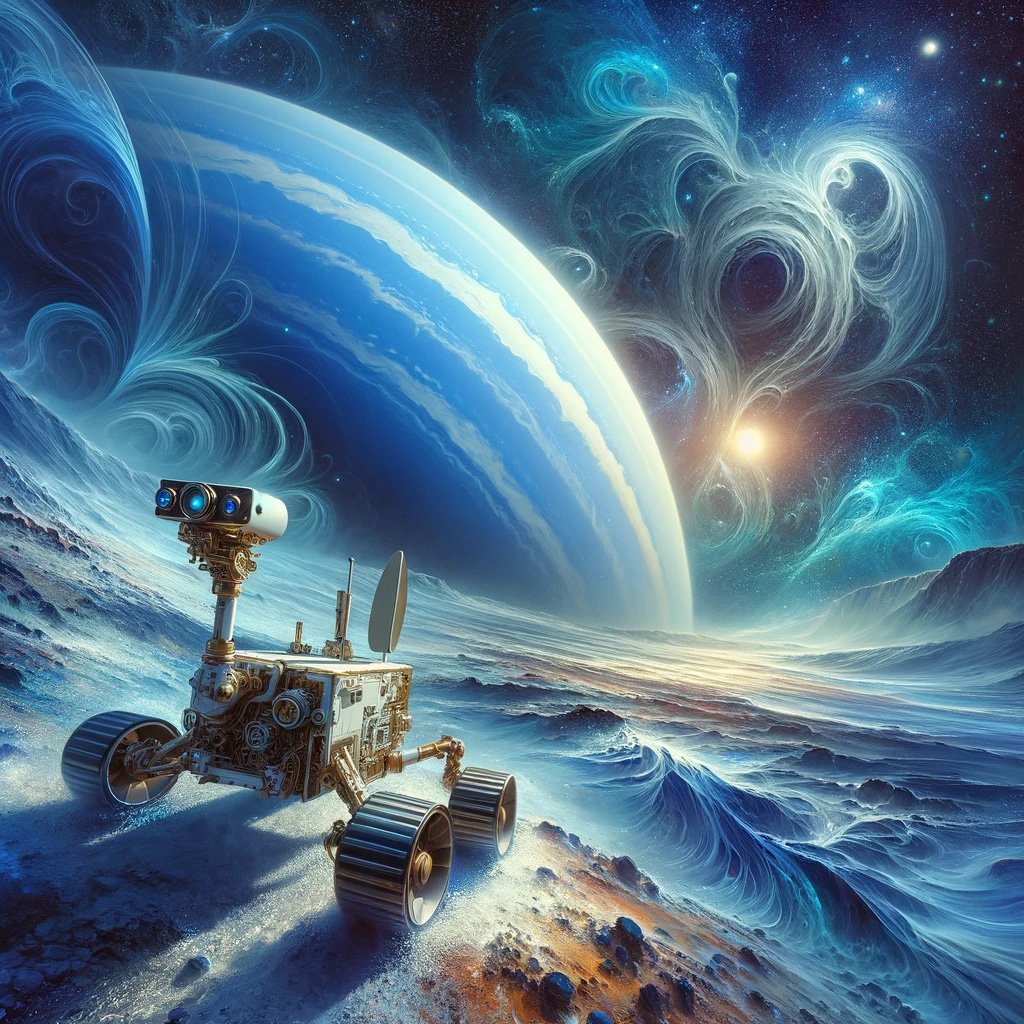What the Surface of Neptune Looks Like
Unveiling the Mysteries of Neptune
In the vast, dark expanse of our solar system, Neptune stands out as a mysterious, blue giant, captivating astronomers and space enthusiasts alike. Discovered in 1846, Neptune marks the outer boundary of our planetary neighborhood, a sentinel in the cold, outer reaches of space. Its vibrant blue hue and dynamic atmosphere promise a world of wonders and scientific discoveries. This article embarks on a journey to explore Neptune, shedding light on what the surface of this distant planet looks like, despite it being far beyond our direct reach.
Exploring Neptune: Beyond the Visible
Neptune's great distance from Earth presents a significant challenge for observation and study. Located about 2.8 billion miles away from our planet, direct observation requires the most powerful telescopes and sophisticated spacecraft. Scientists rely on instruments like the Hubble Space Telescope and the data collected by the Voyager 2 spacecraft during its 1989 flyby, the only spacecraft to have visited Neptune up close. Through these technological marvels, we glean insights into Neptune's appearance and atmospheric conditions.
The Composition and Atmosphere of Neptune
Neptune's striking blue color is one of its most defining features, primarily caused by the absorption of red light by methane in the atmosphere, allowing the blue light to be more prominent. The atmosphere itself is composed of hydrogen, helium, and traces of hydrocarbons and possibly nitrogen, layered over a possibly "slushy" mantle of water, ammonia, and methane ices. This giant planet is home to some of the most extreme weather in the solar system, with winds whipping through the atmosphere at speeds of up to 1,500 miles per hour and massive storms like the Great Dark Spot, akin to Jupiter's Great Red Spot.
Neptune's Surface
Discussing the "surface" of Neptune is a bit of a misnomer, as this gas giant lacks a solid surface like those of Earth or Mars. Instead, if one were to journey through Neptune's atmosphere, they would encounter increasingly dense gases that eventually give way to a hot, dense fluid of "icy" materials—water, methane, and ammonia—above the planet's core. The core itself is thought to be rocky and about Earth-sized, enveloped in this dense, hot mantle. The conditions here are extreme, with pressures and temperatures far beyond what any human-made object could survive.
Neptune’s Rings and Moons: Companions in the Cold
Neptune's beauty is not limited to the planet itself; it is also surrounded by a faint ring system and 14 known moons, with Triton being the largest and most notable. Triton, discovered just 17 days after Neptune itself, is particularly fascinating due to its retrograde orbit, suggesting it was captured by Neptune's gravity rather than forming in place. This moon presents a frozen surface covered in nitrogen ice and geysers, hinting at a geologically active interior.
Neptune in Popular Culture and Human Imagination
Neptune has long captured the human imagination, serving as a backdrop for science fiction stories and artworks that ponder what lies in the distant, cold reaches of our solar system. Its enigmatic nature and striking appearance inspire tales of exploration and discovery, reminding us of the vast, unexplored frontiers that await beyond our home planet.
The Future of Neptune Exploration
The 1989 flyby of Voyager 2 remains the only close encounter with Neptune, providing a wealth of data that scientists are still analyzing today. However, the future holds promise for more in-depth exploration. Proposed missions, like the Argo mission, aim to study Neptune and its moons more closely, potentially launching in the late 2020s or 2030s. These future missions could unveil the secrets of Neptune's atmosphere, weather patterns, and perhaps even clues to the origins of our solar system.
The Enigmatic Blue Giant
Neptune remains one of the solar system's most intriguing worlds, a place where the known meets the unknown. Its deep blue appearance, violent weather, and mysterious moons offer a glimpse into the dynamic processes that govern distant planets. As we continue to study Neptune, we not only uncover the secrets of this distant giant but also gain insights into the nature of the cosmos and our place within it. Neptune's allure reminds us that, even in the age of space exploration, the universe still holds many mysteries waiting to be discovered.
This exploration of Neptune serves as a testament to human curiosity and our unending quest to understand the universe. As we look to the future, the mysteries of Neptune and the outer solar system beckon, promising new discoveries and inspiring future generations of explorers and scientists.

